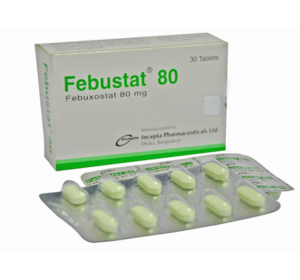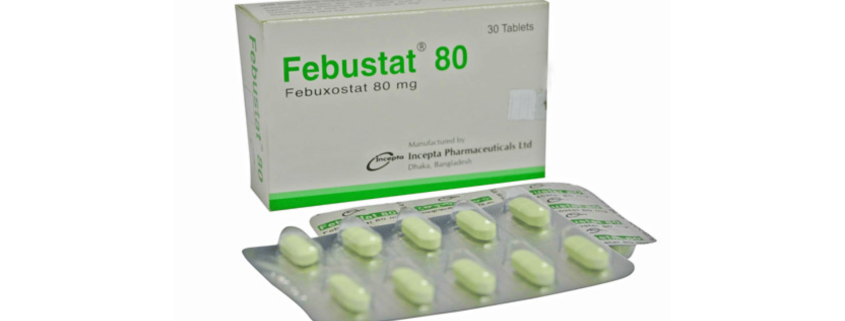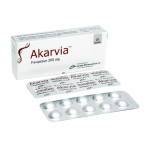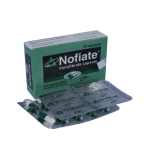Febustat(Febuxostat)

Therapeutic Group: Anti Gout
Presentation
Febustat 40 mg tablet : Each tab contains Febuxostat INN 40 mg tablet
Febustat 80 mg tablet : Each tab contains Febuxostat INN 80 mg tablet
Description
Febustat is FDA approved non-purine, selective inhibitor of xanthine oxidase approved for the chronic management of hyperuricemia in patients with gout. It is not recommended for asymptomatic or secondary hyperuricemia, nor is it indicated for treatment of acute gout. Febustat lowers serum uric acid levels by blocking xanthine oxidase — the enyzme responsible for uric acid production. Xanthine oxidase breaks down hypoxanthine (a natural-occurring purine derivative) to xanthine, and then to uric acid
Indications
Febustat is a xanthine oxidase (XO) inhibitor indicated for the chronic management of hyperuricemia in patients with gout. It is not recommended for the treatment of asymptomatic hyperuricemia.
Dosage & Administration
For treatment of hyperuricemia in patients with gout, Febustat is recommended at 40 mg or 80 mg once daily.
The recommended starting dose of Febustat is 40 mg once daily. For patients who do not achieve a serum uric acid (sUA) less than 6 mg per dL after 2 weeks with 40 mg, Febustat 80 mg is recommended.
Febustat can be taken without regard to food or antacid use
No dose adjustment is necessary when administering Febustat to patients with mild to moderate renal or hepatic impairment.
Use in Children
Safety and efficacy in children below the age of 12 years have not been studied.
Side Effects
The most common side effects of Febustat are liver problems, nausea, gout flares, joint pain and rash.
Precautions
Gout Flare: An increase in gout flares is frequently observed during initiation of anti-hyperuricemic agents, including Febustat. If a gout flare occurs during treatment, Febustat need not be discontinued. Prophylactic therapy (i.e., non-steroidal anti-inflammatory drug (NSAID) or colchicine upon initiation of treatment) may be beneficial
for up to six months.
Use in Pregnancy & Lactation
Pregnancy Category C: There are no adequate and well-controlled studies in pregnant women. Febustat should be used during pregnancy only if the potential benefit justifies the potential risk to the fetus.
It is not known whether this drug is excreted in human milk. Because many drugs are excreted in human milk, caution should be exercised when Febustat is administered to a nursing woman.
Drug Interaction
Concomitant administration of Febustat with azathioprine, mercaptopurine or theophylline could increase plasma concentrations of these drugs resulting in severe toxicity.
Over Dose
Febustat was studied in healthy subjects in doses up to 300 mg daily for seven days without evidence of dose-limiting toxicities.
Commercial Pack
Febustat 40 mg tablet: Each box contains 3 blister strips of 10 tablets.
Febustat 80 mg tablet: Each box contains 3 blister strips of 10 tablets.



